Sink & certify
Hello! Happy Sunday :)
I got back to the boat late on Monday, and the next day was sink plumbing, connecting the tap and an inline water filter. It's a bit of a rube, and the u-bend is strictly unnecessary and the wrong way around, but I need it to reach the exit pipe in the hull:
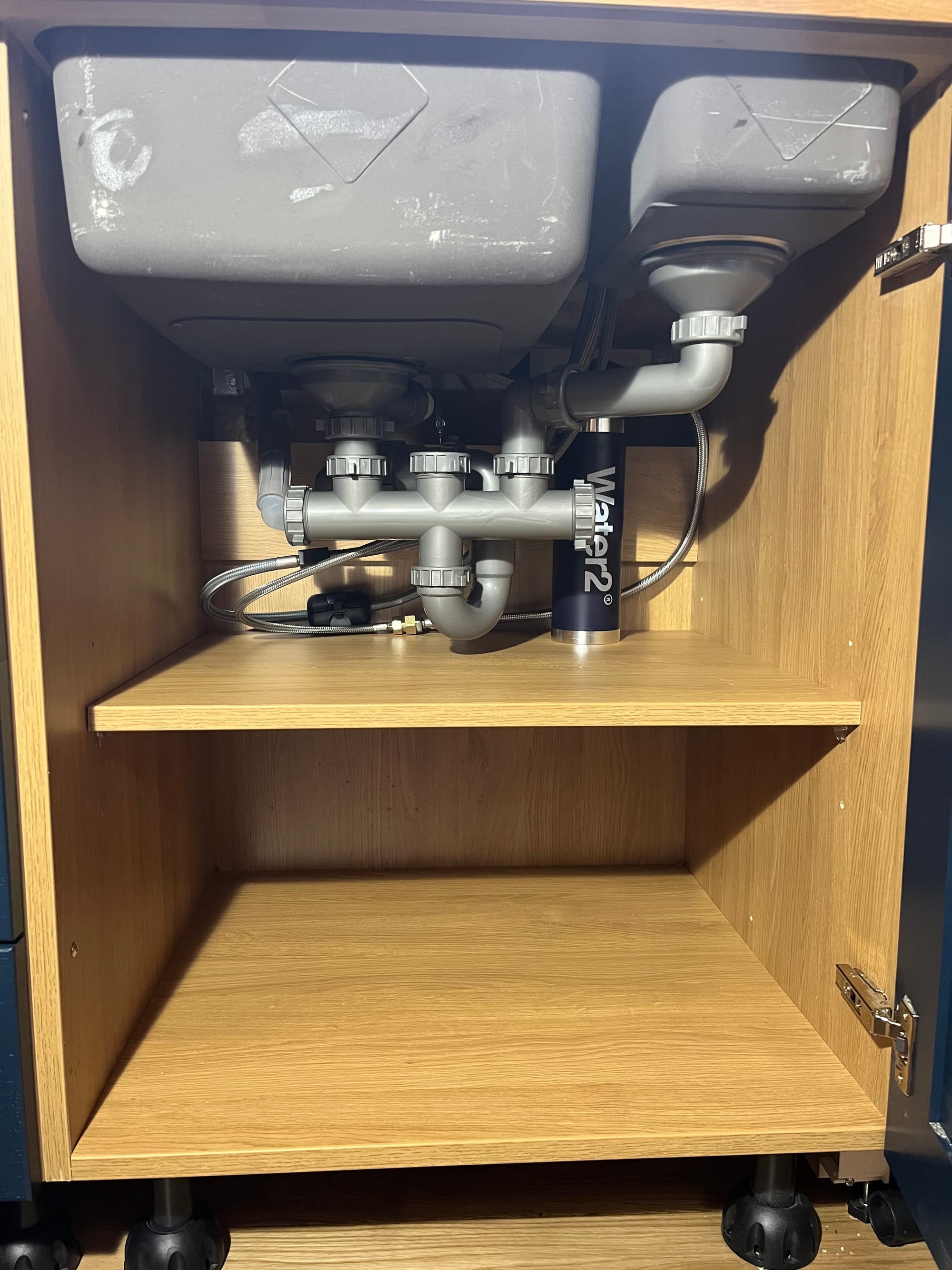
And that evening I did a second seal around the sink:
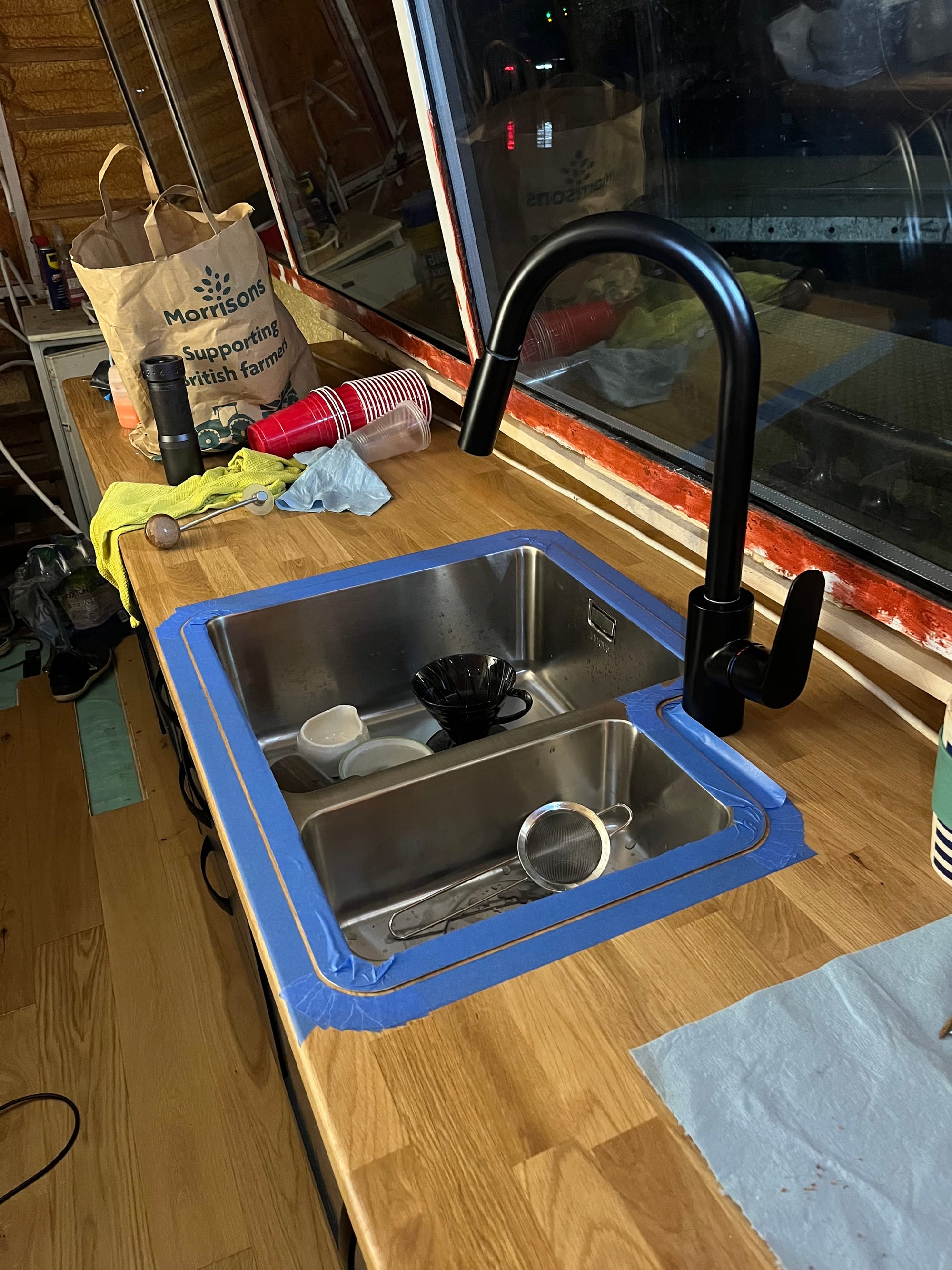
The water pressure is a little pathetic, but it works!
The washing machine is also plugged in and ready, but there's some error about water in the bottom I need to fix. I then turned off the old fridge and started filling the kitchen cupboards with stuff. It's all the small things, like no longer eating out of a yogurt pot, and it's been nice to de-clutter the bathroom with everything I'd been using for the sink access.
Although in designing the kitchen I thought there'd be lots of cupboard space, but now that I've started using it... where do the plates go? Glasses, mugs?! It seems like I optimised for all types of food and nothing to eat it off. Changing anything it'd be the bin unit — I like that it's out of sight, but I could easily put a standing bin at the end of the counter and use the unit for more storage. I still can, depending on how annoying it gets.
Then back to boat safety... the deadline was Friday, so I removed the gas regulator and pipes...
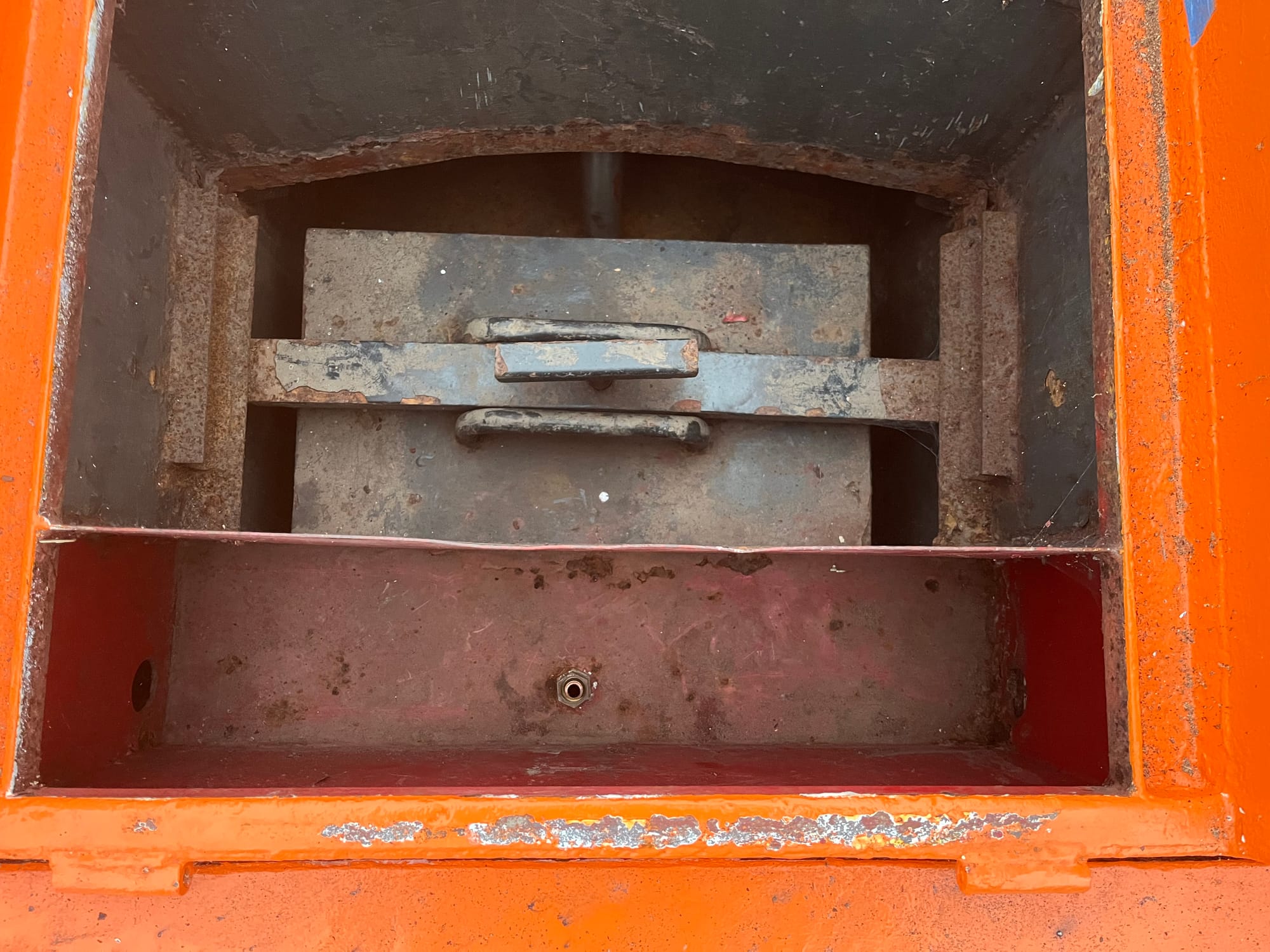
...added some crimped connections and a fuse for the bilge pump...
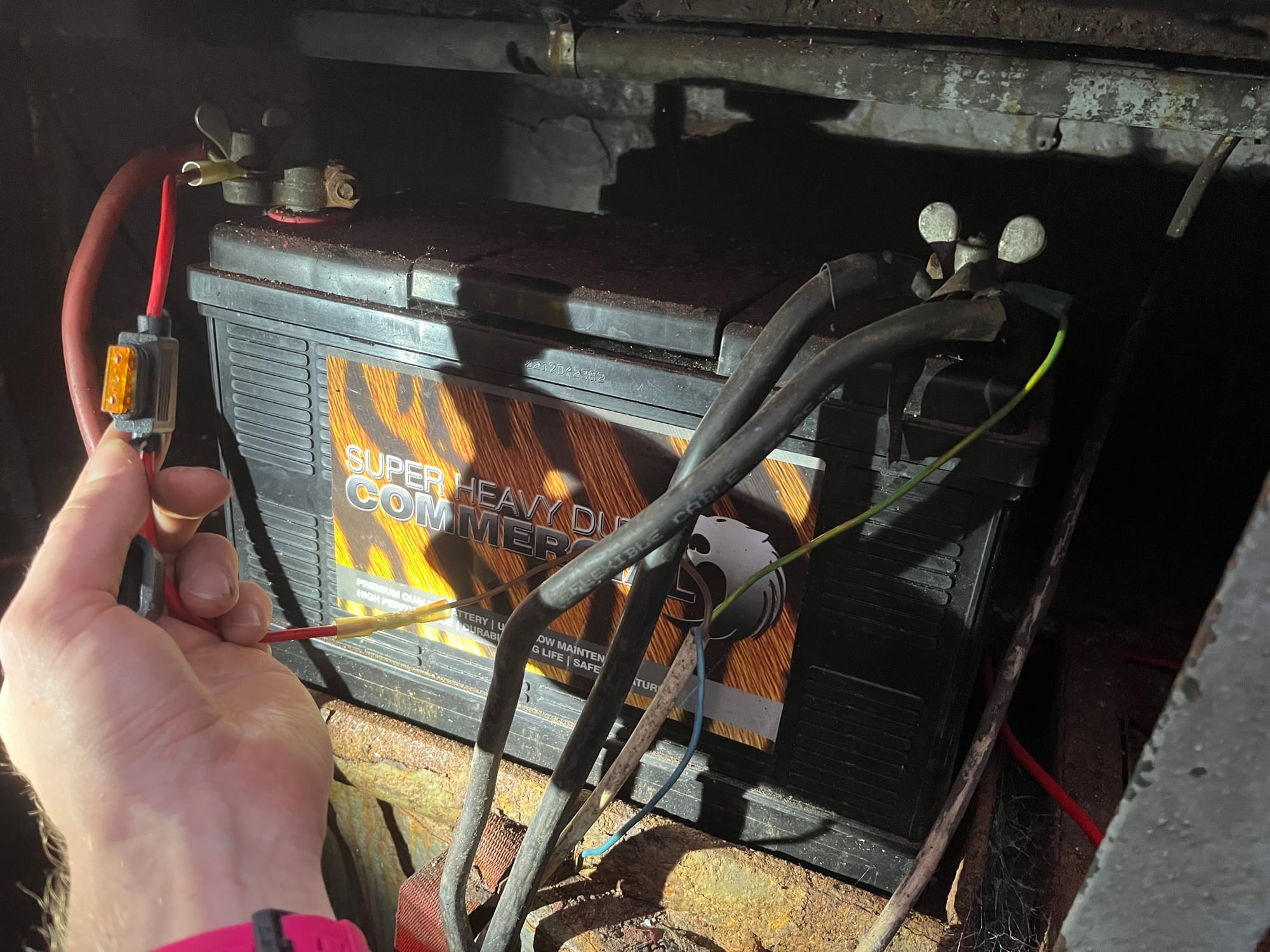
...and when some nylon sleeves arrived on Wednesday for abrasion protection, I fit the new fuel lines:
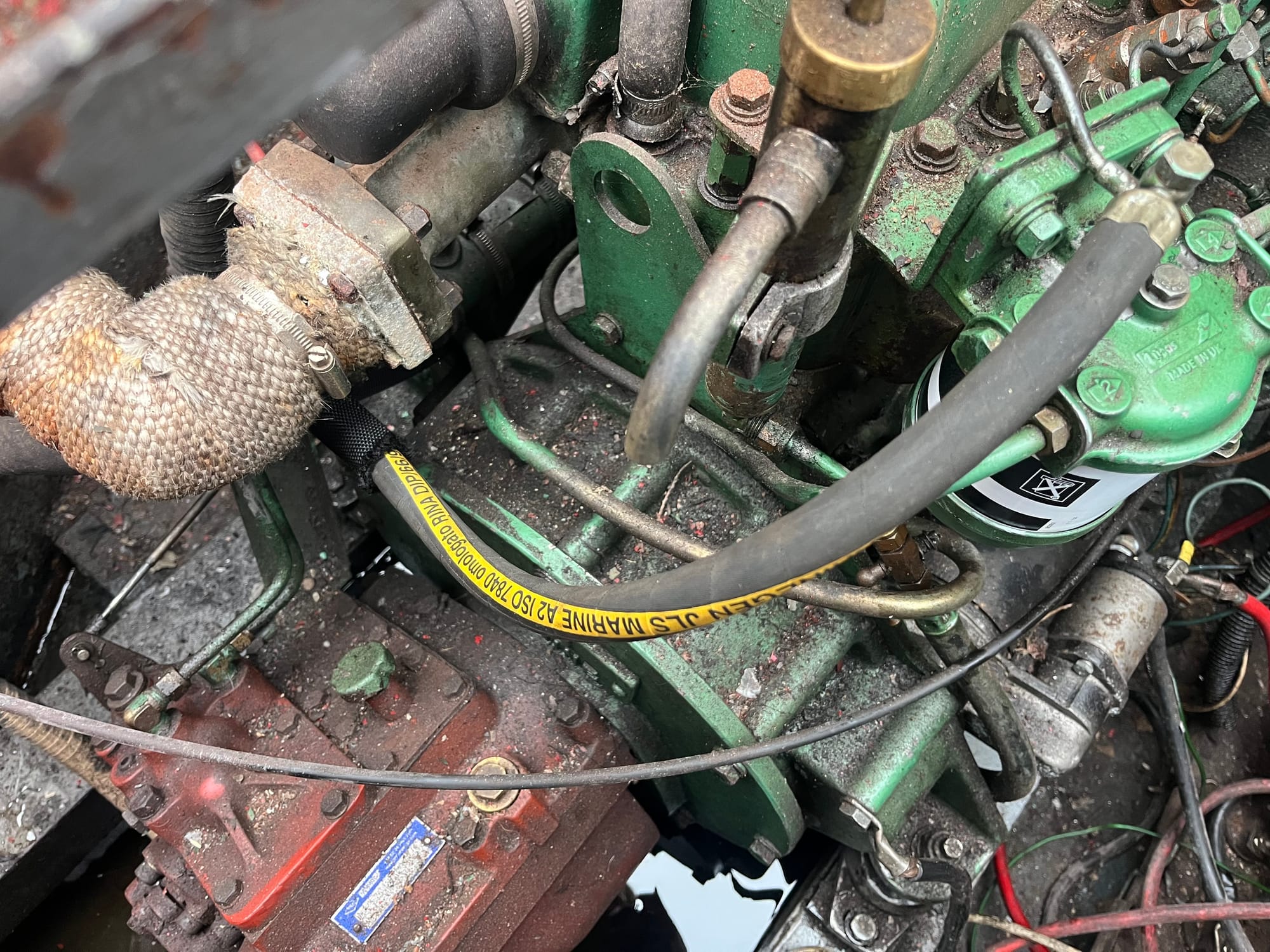
Being the engine bay really makes me want to clean and paint it, but focus Nicholas! I am cold. It can be fun doing engine stuff, but I am ready for that not to be a requirement for home.
I also fit a new fuel filter, bled the lines and tried starting the engine... which it wouldn't. Stumped awhile as the injectors spurted diesel, I eventually figured air was still in there, and did all the touch points. Pro tip: bleed the fuel in the order it goes, from inlet pump to injectors to return feed on the filter. Any bubbles could be enough to stop it firing, but when it did, buttery smooth...
So I sent the photos off, satisfied the examiner and I have a 4-year safety certificate! The gas is labelled "decommissioned," which I'm about to reverse with a new regulator and pipes, and he said something about the gas lockers being non-compliant — the middle compartment with the regulator should be the same height as the lockers apparently, which is odd considering it hasn't come up in previous examinations and the boat is 36 years old. But that's a 2029 problem, and for now I shall forge on as it was. I'd also like to put a bubble tester in there; previously you'd unscrew a test point and use a pressure gauge to certify. I had one until it sank, but I'd like to test for leaks without a separate device.
I also accidentally bought a reel of 10mm copper pipe, assuming I'd replace the whole lot, but its walls are non-compliantly too thin and I'll stick with the bigger 1/2" — thicker walls, and a lower pressure drop. Maybe imperceptible because it's a short run, but it's a powerful hob so I ain't skimping. Speaking of I'll also need new hob nozzles for LPG — it's currently setup for mains 20mbar, and I need the smaller ones for 37mbar.
I've had people shocked that I'm doing the gas system, like gosh isn't that dangerous, and... idk, maybe?? Gas explosions are more cinematic than electrical fires, but I still think it'll be just as safe, if not more so; like with the electrics I've developed a healthy respect for how not to burn the boat down or stop my heart (protected wires sized for the load + an exit path if shit hits the fan, faulty components etc.), and with gas the principles are similarly simple: size nozzles and pipes correctly, and make sure it doesn't leak. And in both cases, turn off the supply when you're playing around, and test Test TEST. Ain't safe until the meters read correctly.
Anyway, before we get to hot food I would like to be warm myself. I've ordered a bunch of components to rebuild the stove, and I started preparing the hearth, first by cutting out the accidental insulation:
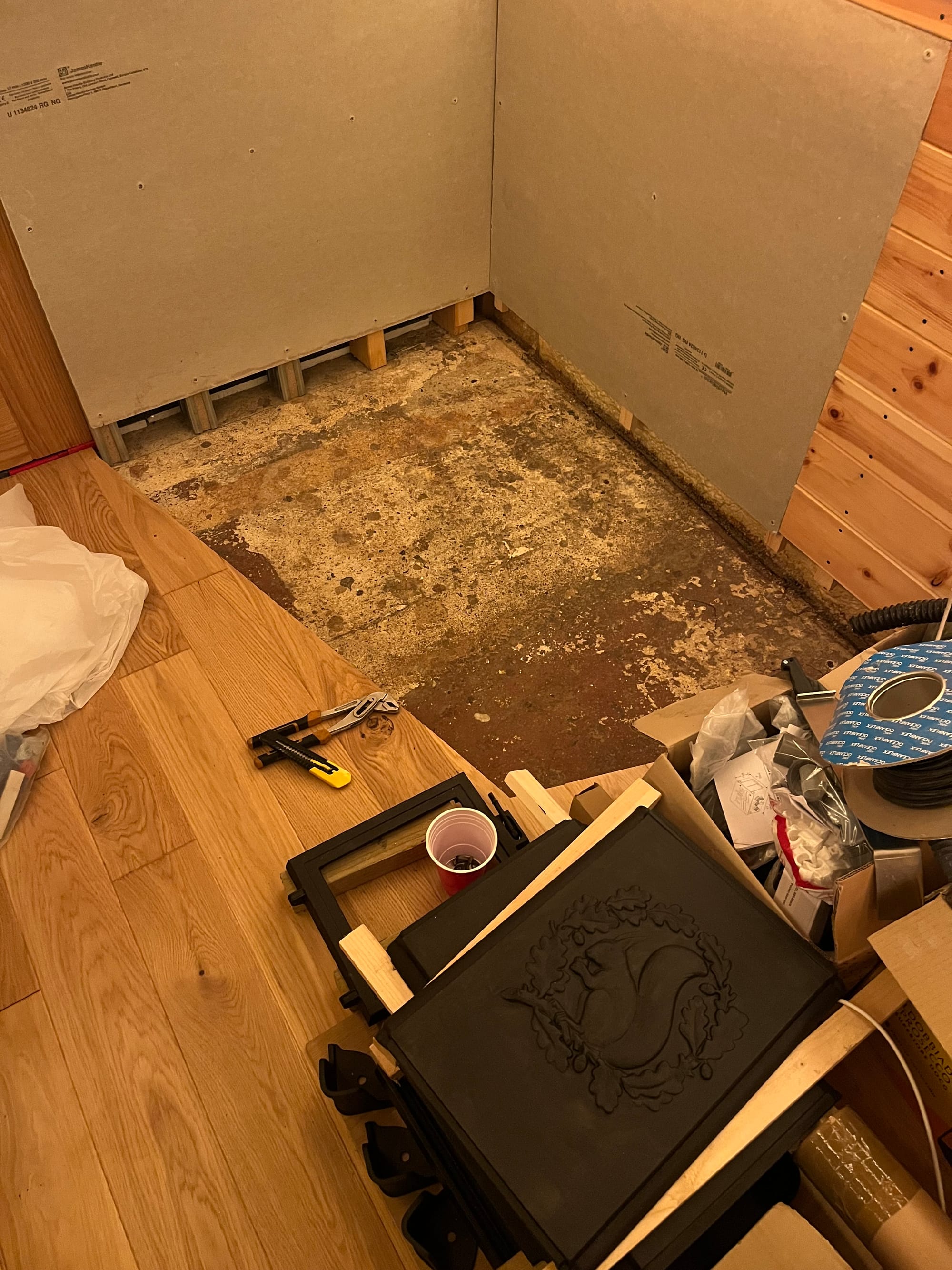
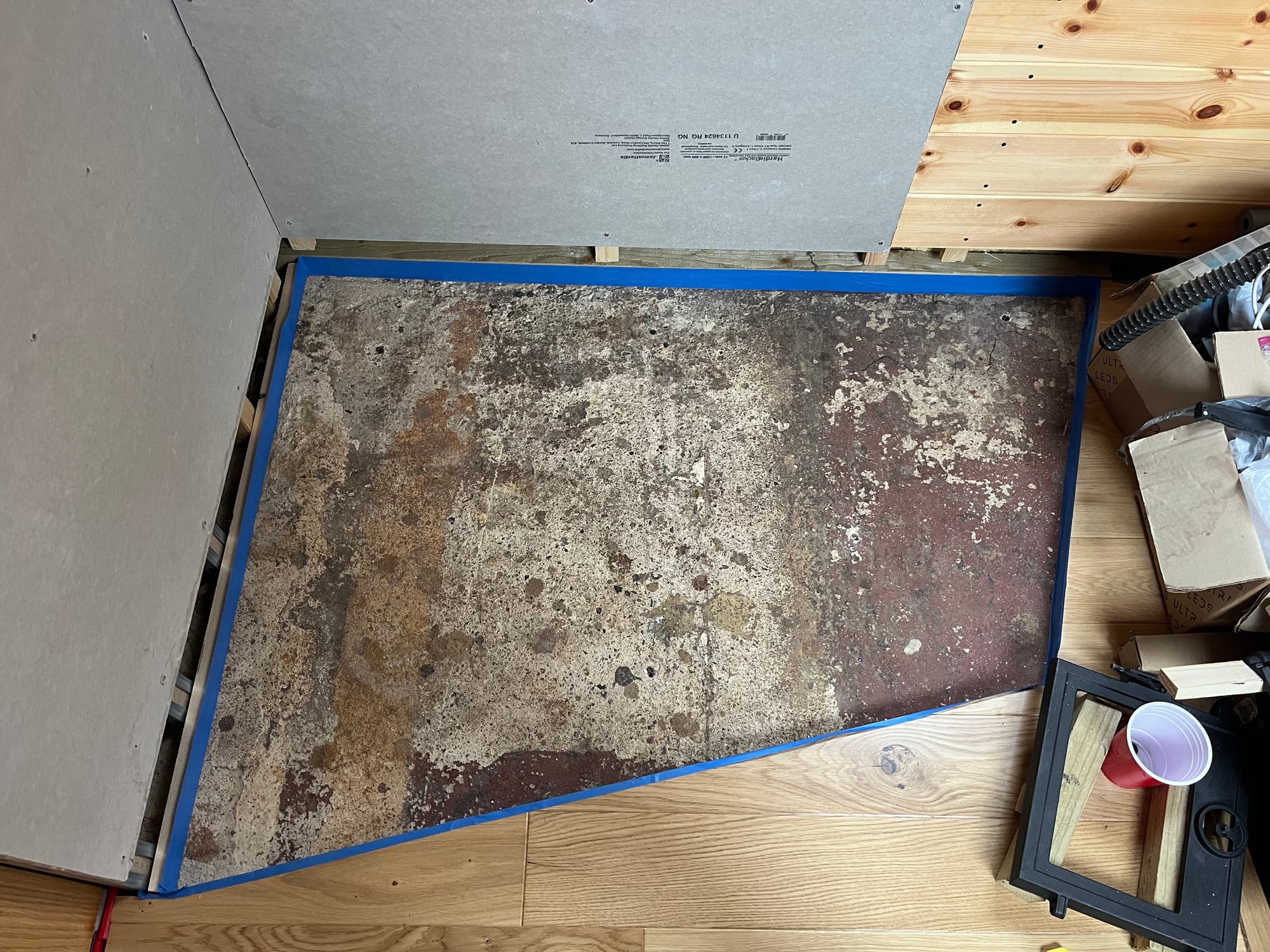
And after filling the water tank to make the boat more level, 3 layers of self-levelling compound (SLC) to raise the floor up for tiling:
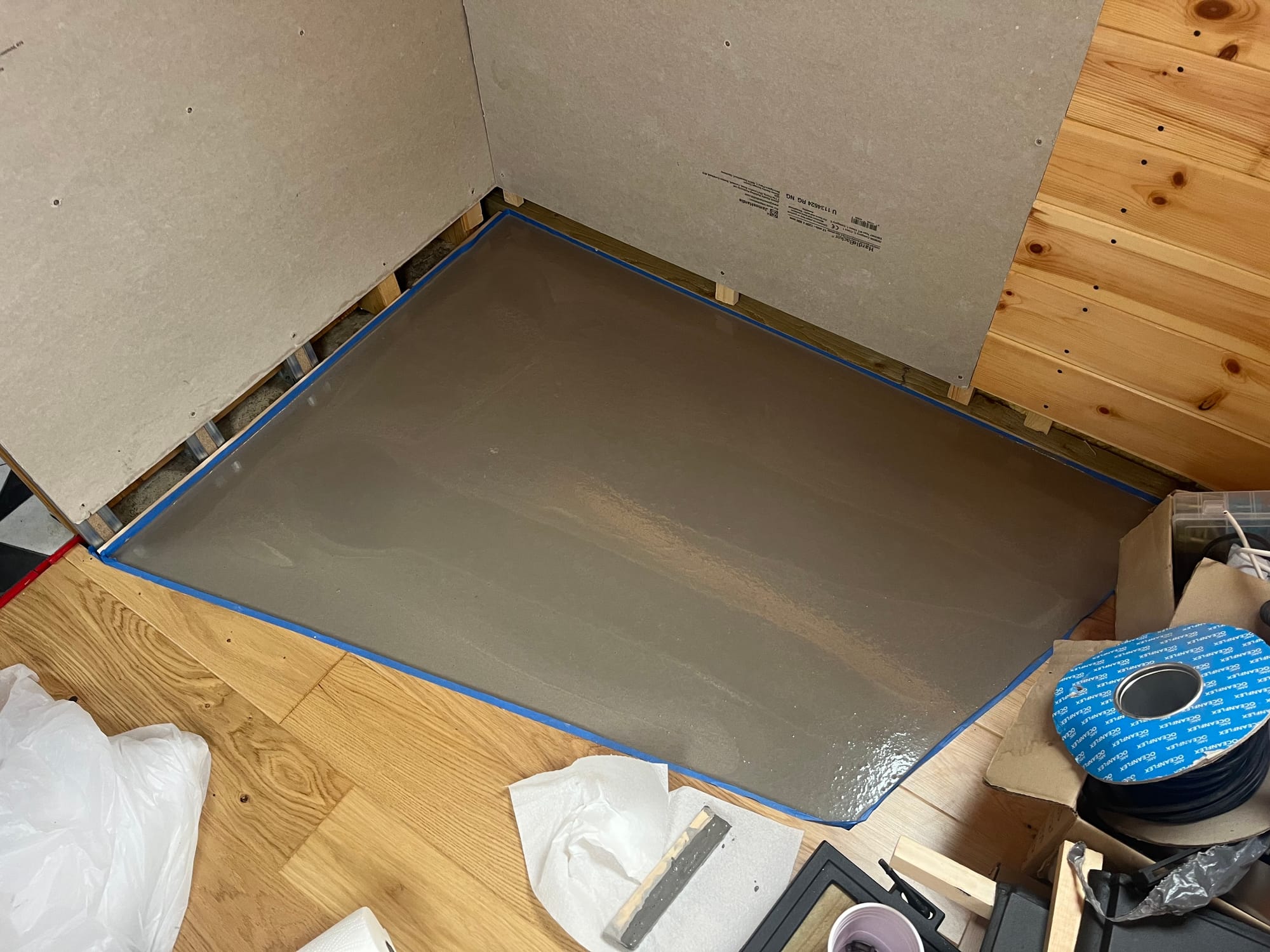
Unlike concrete it's delightfully smooth and runny, and as the name suggests, sorts itself out to make a level surface. It's another ~70kg of boat, and next week I'll tile it and start on stove assembly.
Oh also, the roof tarp started disintegrating for some reason and ruined the rest of the pine le mao, but luckily I don't need much to finish the stern; a couple of 3.5m lengths would've been nice that I'll have to re-source.
Until next Sunday!
- Nick
